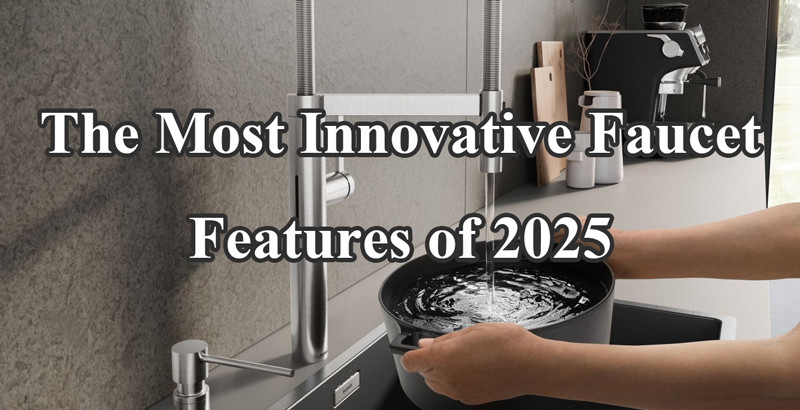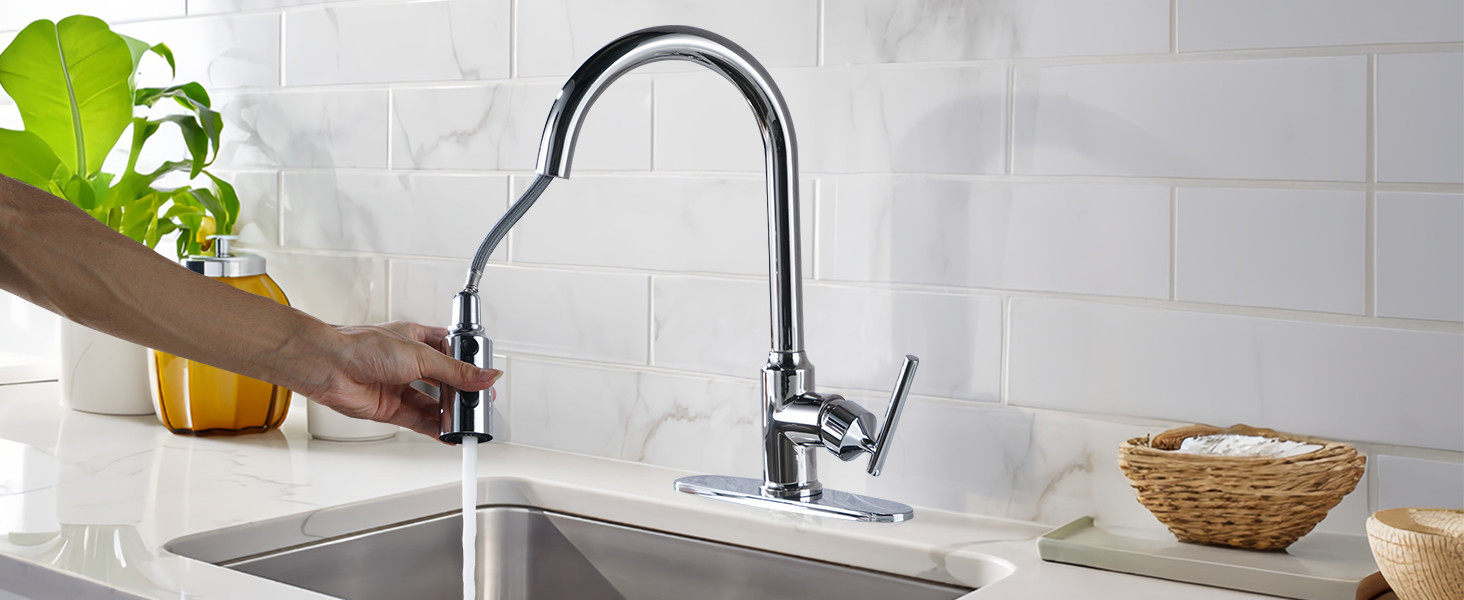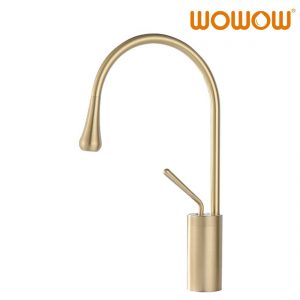I’m in a slum in Faridabad, India, south of New Delhi, surveying rundown bogs with a person named Mayank Midha. Behind us is a standing pond of sewage. Over to our left are the slender alleyways and tight dwelling quarters of the slum, the outer partitions of the thin mud-brick buildings painted in cracked purples, yellows, aquamarines and blues. Stray canine laze round, and kids chortle and run down the corridors. The odor leaches from open sewer strains carved into the walkways made from dusty stone pavers. In a single doorway, there is a girl hunched over washing dishes on the ground.
The bathroom stalls, roughly the scale of transportable bogs, are made from concrete, porcelain and rusted metallic. I stroll down the row to attempt prying open each to look inside. After only a 12 months of use, most of those latrines are both brimming with feces, stripped for elements, locked shut or some mixture of the three. Folks within the neighborhood, noticing our curiosity of their damaged bogs, inform us they sometimes defecate in a close-by trash-strewn filth area as a substitute.
“It is fairly disgusting. Many of the occasions you see there isn’t any lighting, no air flow, the bogs get vandalized. There’s shit throughout, it is clogged,” Midha, co-founder and CEO of a fledgling good sanitation startup known as Garv Bogs, says about these amenities. He has a boyish face, massive, affected person eyes and a lightweight goatee and mustache. He provides flatly: “It is deeply pathetic, it is depressing.”
India has the unlucky title of being the open defecation capital of the world. About 344 million folks in India haven’t got common entry to bogs — that is roughly one out of each 4 Indians. It is also greater than the whole inhabitants of the US.
Functioning bogs are greater than a primary comfort; they’re very important for public well being. Yearly, greater than 126,000 folks in India — a lot of them youngsters — die from diarrheal illnesses on account of poor sanitation, in response to the World Well being Group. Contemporary excrement is teeming with viruses and micro organism, capable of transmit illnesses together with cholera, dysentery, hepatitis A, typhoid and polio via flying bugs that land on deposits or when feces contaminate water provides. Poor hygiene practices, like not washing fingers, are widespread in low-income and rural communities, making these areas particularly susceptible to illnesses, together with the coronavirus that causes COVID-19.
Girls and women are pressured to base their each day routines round this lack of bogs. Girls get up earlier than dawn to alleviate themselves to keep away from prying eyes, harassment or rape. When no useful bogs or sanitary pads can be found at colleges, women will go house in the course of the day to make use of a rest room and skip lessons altogether throughout their durations.
These are big and interconnected challenges that Midha is confronting. A 37-year-old former software program engineer and Faridabad native, he has spent the previous 5 years creating what he hopes is a greater public bathroom. By means of his tech startup, he created bogs which are the identical dimension as these rundown amenities however are made from metal to make them extra vandalism-proof, simpler to wash and capable of stand up to heavy use with out falling aside. His extra refined fashions embrace real-time sensors to trace hand washing, water utilization and bathroom flushes. That information gives native well being officers with priceless hygiene info and ensures the amenities are working.
4 boys stroll previous one of many decrepit group bogs within the slums of Faridabad, India.
James Martin/CNET
His firm, based mostly in a stylish coworking house in Faridabad, not removed from the slum, employs simply 29 staff. The scale of the issue they face is gigantic in a rustic of 1.3 billion, the second most populous nation on the planet. A lot of his fashions are additionally at the least 25% dearer than conventional amenities, so it is unlikely Midha will be capable to construct out much more bogs rapidly. Reasonably than being daunted by these hurdles, he says he sees them as an enormous enterprise alternative. He can even level to the progress he is already achieved.
Garv, which suggests dignity in Hindi, final month celebrated its 1,000th set up, with bogs now in group areas, colleges and out of doors authorities buildings. About 200,000 folks use them each day, together with 60,000 faculty youngsters.
“I’ve seen a whole lot of change previously three years on the bottom,” Midha says at his workplace following the go to to the slum. He says many extra folks have entry to bogs that by no means did earlier than. Mentioning one in every of his firm’s installations, he added: “These bogs are useful, persons are utilizing it, solely due to the truth that the native authorities physique, they’re extra motivated in direction of cleansing, in direction of sustaining these bogs.”
“We do not use the general public bathroom in any respect as they’re far-off and really soiled,” says Maya, a 16-year-old woman dwelling in a tent camp.
James Martin/CNET
His work additionally does not stand alone. The Indian authorities has spent tens of billions of {dollars} to advertise higher sanitation underneath Prime Minister Narendra Modi’s Swachh Bharat, or Clear India, mission. The seven-year effort — which has constructed over 100 million toilets and resulted in a substantial drop in open defecation — is such a giant deal that India printed the Swachh Bharat brand on its forex. Billboards concerning the mission are plastered all around the nation, and the marketing campaign impressed a film known as Bathroom: A Love Story. This system has sparked new improvements in sanitation, together with a Google Maps undertaking to record over 57,000 public bogs throughout India.
Regardless of these efforts, most of the folks we discuss with across the slum are extremely annoyed, saying the federal government has been ignoring their requests for clear, usable bogs for years. As I can see within the slum, having damaged and soiled bogs is worse than not having them.
“In fact I need a cleaner rest room,” a 16-year-old woman named Maya, who lives in a nomadic tent encampment up the street from the slum, tells my translator in Hindi. Carrying a flowing brilliant pink scarf with a checkered and purple salwar kameez, she’s busy fashioning a beaded necklace whereas sitting underneath a blue-tarp tent. “We do not use the general public bathroom in any respect as they’re far-off and really soiled. My dadaji [grandfather] additionally makes use of the open area. For our tub too, we accomplish that by tying a material round and utilizing a bucket of water within the open area.”
I went to New Delhi again in February, simply weeks earlier than the coronavirus lockdowns, to be taught firsthand about this push to stamp out open defecation in India. Months later, this work of saving lives with bogs remains to be simply starting. “There may be stark change occurring now,” Midha says.
Welcome to the Spaceship Bathroom
There is a pale peach-colored constructing on the grounds of Pragati Maidan, a virtually 150-acre conference heart within the coronary heart of New Delhi. The outside partitions, patched up with naked concrete, appear to be Jackson Pollock stopped by and splattered gentle brown paint all around the outdoors. However this unimpressive shell belies what’s tucked inside: the gleaming crown jewel of Garv Bogs’ small rest room empire.
Neha Goel, a 37-year-old senior undertaking supervisor at Garv, greets me on the entrance of two beforehand defunct public restrooms that Garv retrofitted. We stroll inside and it looks like the inside of a spaceship.
“Anyone that’s utilizing the bathroom will get a neat and clear bathroom,” Goel, who effortlessly rattles off an array of bathroom stats, says whereas exhibiting off the futuristic ladies’s rest room.
Certainly one of Garv Bogs’ automated stainless-steel restrooms on the Pragati Maidan conference heart in New Delhi, India.
James Martin/CNET
The partitions are shiny stainless-steel, with all-metal stalls, bogs, urinals, sinks and taps. The imposing metallic outer doorways would look proper at house in a financial institution vault. Strips of faux inexperienced grass alongside the partitions break up the commercial aesthetic.
Among the options are widespread in workplace bogs, like autoflush bogs and automated sink taps. However different parts are extra superior than what you’d see in any American public facility, similar to sensors hooked up to SIM playing cards in every stall and tap that feed real-time information on water utilization, flushes and upkeep wants into Garv’s dashboard.
“Whereas sitting within the workplace, you will get a whole lot of information,” Goel says. “For instance, you will get to know the way many individuals use the bathroom, what number of occasions it received flushed, how many individuals truly wash their fingers and if there’s any malfunction, for instance if the bathroom will get blocked or if we run out of the water.”
Midha later tells me all that information helps Garv make certain its bogs are being maintained correctly and any malfunctions are rapidly fastened. Plus, the data presents priceless insights for Garv’s public outreach work.
A handful of the options constructed into Garv’s good bogs.
Rob Rodriguez/CNET
“It helps us construct a robust reference to the group,” Midha says. “If we’re doing group mobilization actions, we all know what’s the actual drawback of the group. Whether it is hand-washing, we work with them very particularly in direction of handwashing.”
Stalls common with squat bogs which are degree with the ground — not Western sitdown bogs — embrace an automatic flushing and ground cleansing system. Goel demonstrates how this works, opening a stall to indicate how between makes use of a sensor alongside the wall triggers the plumbing system to fill the metallic ground with water that rapidly clears away. As she walks inside, ceiling lights click on on and the identical sensor tells the bathroom to robotically flush itself earlier than she steps above it and after she steps away. Whereas the stall door is locked, an “occupied” gentle on the surface additionally switches from inexperienced to purple.
I am visiting the toilet just some days after it opened to the general public. It is nonetheless buggy, with the automated lights turning off too rapidly in a handicap stall, the auto-floor cleansing typically overflowing and auto-flush urinals failing to set off. However each time Garv improves its bogs, it will get one step nearer to creating one thing that may final for many years, not months, with out breaking down.
“Little or no handbook intervention is required to take care of this facility,” Neha says proudly.
These options do not come low-cost: A single Garv bathroom with its metallic enclosure can price between $2,400 and $4,900, about 25% greater than comparable conventional fashions, Midha says. The Pragati Maidan retrofit undertaking was even pricier, at $50,000. (Different firms promote transportable bogs made from plastic and different cheaper supplies that go for just a few hundred {dollars}.) However, Midha says, companies make up these upfront charges with decrease upkeep prices.
Welding on the Garv Bogs manufacturing facility.
James Martin/CNET
If these bogs carry out effectively, S.R. Sahoo, a normal supervisor with the conference house, says he’d like so as to add extra spaceship bogs to the remainder of the sprawling advanced.
I take an hour-long drive via New Delhi’s hectic visitors to a small industrial space in Faridabad the place Garv builds its high-tech bogs. The manufacturing house is one massive, messy room with naked white partitions and a muddy ground. On one facet is a handful of metallic bathroom stalls in varied levels of building. Throughout from them is a cluttered heap of uncooked supplies jammed alongside the wall: two purple metallic drums, a whole bunch of skinny scraps of metallic, picket frames and stacks of dusty pipes. Alongside the again wall, one employee is welding metallic items and one other is utilizing a round noticed to chop metallic, with fiery sparks taking pictures within the air.
Garv’s bogs are custom-made to incorporate completely different options. Cheaper fashions are less complicated metal installations, with out the flamboyant sensors in-built. Some embrace photo voltaic panels for the lighting, and others that may’t be linked to an present sewage system make use of biodigesters that convert the waste into fertilizer for landscaping.
However all of this tech nonetheless requires upkeep to maintain the bogs clear and dealing. Midha says he encourages anybody shopping for his bogs to place funds apart for upkeep, as a result of his amenities can also fall into disrepair. Midha has been working to get upkeep contracts for bathrooms he is constructed up to now to forestall that from occurring. Of his 1,000 installations, he stated about 680 Garv bogs are recurrently maintained by a authorities or contractor and 422 of them have real-time monitoring.
“I do not know the way the SIM card goes to assist until you’ve got somebody in cost cleansing them,” stated Kabir Agarwal, nationwide reporter for information web site The Wire, based mostly in New Delhi, who has written extensively about Swachh Bharat.
An unlikely inspiration for a bathroom
Midha can appear so unassuming that you simply’d sooner peg him as an actuary than a tech founder and CEO. Within the 12 months that we have been in contact, he is typically been reserved and poker-faced, nearly to the purpose of being mysterious. When he smiled, it typically caught me unexpectedly.
But when he talks about utilizing bogs to assist folks, his ardour begins to burst out of its mild-mannered shell. His eyes brighten and look within the distance towards some undefined, higher future. He is warm-hearted, idealistic and fast to specific his frustration concerning the state of bogs in his nation.
His Garv workers appear to have the same mixture of idealism and professionalism, and converse of Midha with admiration. Had been it not for Swachh Bharat, this group of younger techies might have labored collectively to construct a profitable app firm or climbed the ladder of main companies. As an alternative, they deserted such aspirations to enter sanitation, a area that is at finest misunderstood and at worst overtly disrespected, and tackle an issue that is so massive and festered for thus lengthy. Their objective can be an unlikely one, reimagining the lowly and ignored bathroom right into a tech showcase and a factor of magnificence.
Garv Bogs’ founder and CEO Mayank Midha on the startup’s workplaces in Faridabad, India.
James Martin/CNET
However this is not a charity. There may be loads of cash to be made as billions of {dollars} are flowing into sanitation initiatives in India. Midha does not shrink back from these info, saying it is serving to his enterprise develop, including that he deliberately made Garv for-profit so it will change into sustainable and never reliant on grants.
And getting simply this far wasn’t simple. This five-year journey was the fruits of two essential elements of his life coming collectively: his father’s enterprise and his training.
When Midha was a boy, his dad began a producing firm known as SS Engineers that made sheet metallic elements for industrial electronics, telecommunications tools and HVAC methods. Throughout Midha’s first 12 months in faculty, his dad, who’s well being had been failing, died on the age of 49. He jumped in to assist the household enterprise whereas juggling his schoolwork, and his mom, who was a instructor, took over the corporate.
He graduated in 2005 and took a job as a software program engineer for Tata Consultancy Providers, the worldwide IT and consulting enterprise, however he left two years later. “I knew it is one thing else that I needed to do,” he stated. “I needed to develop one thing of my very own.”
He entered the Institute of Rural Administration Anand’s MBA program, the place his work in poor communities turned him onto serving to the least lucky of us. His mom retired from the household enterprise and he took it over, however he admits he failed at it.
Earlier than the enterprise fell aside, he took on telecommunications shoppers who ordered dustproof, waterproof and vandalism-resistant metallic enclosures to accommodate delicate tools at cell tower websites. After the undertaking ended, there have been nonetheless just a few of those cupboards sitting round within the firm manufacturing facility.
“That is the place it struck me that most likely we are able to manufacture transportable bogs that may be made out of metallic,” Midha stated.
Stressed to attempt one thing new after watching his father’s enterprise come aside, Midha noticed the Swachh Bharat mission, with its big funds and public-wellness pitch, as the fitting alternative. He began to analysis the sanitation drawback in India and was surprised on the demise, illness and hardship it was inflicting. He determined this was his new calling: constructing a nearly indestructible public toilet. He brainstormed concepts on the dinner desk with Megha, his spouse and highschool sweetheart, after placing their daughter to mattress. Megha, who’s additionally a software program engineer, co-founded Garv and advises Midha with initiatives whereas working a full-time company job.
Creating only a metal construction was simple for opponents to copy, so the couple added real-time movement and water stream sensors and different tech options to distinguish their good bathroom. He developed a prototype in 2015 and began pitching his new idea.
The primary two and a half years have been extremely tough. Authorities officers, used to approving concrete and brick amenities, balked at the concept that Midha’s metal construction was even a bathroom. “Folks ask us if it is a phone sales space or one thing,” Midha stated.
After piling on debt, Midha received his first notable contract in 2017. The not-for-profit Aga Khan Basis requested him to construct his bogs in authorities elementary and center colleges in Bihar, one of many poorest states in India. The center faculty, which taught about 400 college students, had no useful bogs. The Garv bogs, 4 at every faculty, are nonetheless up and operating right now.
It is actually good to see the smile on the face of ladies once they see useful bathroom amenities of their faculty.
Mayank Midha, Garv Bogs CEO
Midha began to achieve recognition for his bathroom and he landed extra contracts. He had a watershed 12 months in 2018, when he doubled the variety of Garv installations to 700 and garnered a Unilever Younger Entrepreneur Award in London. New initiatives now embrace installations in Ghana and a refugee camp in Turkey, in addition to a group bathroom set up deliberate for a Delhi Metro station.
Midha says he needs to reimagine public bogs in India as group areas, with landscaping, consuming water amenities, laundry providers and different actions, as a method to encourage use and encourage group delight of their bogs.
He could also be effectively on his method to that idea, with a whole bunch of 1000’s of individuals already utilizing Garv bogs on daily basis.
Change is coming
Over the subsequent few days in India, I see what having useful bogs can imply for a group.
Goel and Nishant Agarwal, Garv’s chief working officer, take me to the agricultural city of Khair within the Aligarh district of Uttar Pradesh to go to an set up of Garv bogs that was constructed two years earlier. The drive is 4 hours out of New Delhi, and as we get off the freeway, the uneven street is surrounded by miles of inexperienced wheat fields dotted with timber. Alongside the best way, there are small, low-slung retailers promoting chips, scarfs and sandals by the street amid fruit cart distributors, motorcyclists and cows hauling carts crammed with bricks.
Exterior a line of Garv bogs within the rural city of Khair.
James Martin/CNET
The principle drag of Khair is hectic with open-air retailers, visitors and other people strolling alongside the edges of the street. Tucked into an alleyway is a row of bogs, painted pink to indicate they’re ladies’s amenities (although loads of males are utilizing them) and every common with a Garv Bogs signal, the corporate’s distinguished blue “G” brand simply seen for anybody strolling by. These bogs, which have been bought and maintained by the city, are amongst Garv’s inexpensive, primary fashions, so they do not embrace real-time sensors. A lady named Guddi Devi is busy cleansing the bogs after every use. She covers her nostril and mouth in her scarf as she pours water on the ground and in the bathroom after which brushes the ground and close by picket steps with a straw broom.
The bogs are effectively used, thanks partly to Swachh Bharat’s fixed promotion of hygiene practices in addition to hefty fines for these discovered going out within the open.
“We will see a whole lot of change within the rural lots. Earlier, everyone was doing open defecation,” Aatm Prakash Rastogi, a block growth officer for the Uttar Pradesh state authorities, tells me in his close by workplace as he is busy signing papers at his desk. “Now it is a stigma.”
The following day I go to one other New Delhi slum with a big dusty area resulting in a small store and alleyways crammed with small properties. On the entrance, an NGO final 12 months constructed units of males’s and girls’s bogs made from porcelain and with flimsy plastic doorways. The bogs are easy, nothing near the sensors and brilliant metal of Garv’s fanciest amenities, however they’re clear and usable, due to obtainable water and a employee taking good care of them.
Amy Yonghee Kim/CNET
I stroll contained in the slum, the stink of open sewage strains greeting me. There, I meet a carpenter named Ramjilal outdoors his cramped one-room house, which inserts a mattress and little else. He is skinny and clear shaven and wears a checkered vest over a collared shirt, slacks and skinny flip-flops.
He says he is a lot happier now that the group bogs can be found. “I used to do open defecation, now I take advantage of that bathroom,” he tells me via a translator.
One other step ahead
Within the months since I visited Midha, my work and the world’s consideration has been targeted on the coronavirus. Throughout that point, Midha and I stored in contact over WhatsApp, and we would speak about his newest initiatives. We might additionally chat about one another’s households and provide phrases of encouragement, since each our nations have been badly hit by the pandemic.
Quite a bit has modified together with his work. Ever the tinkerer, Midha developed new options to deal with the coronavirus disaster. He added ultraviolet lighting into Garv bogs to assist disinfect them between makes use of. He despatched me a video over WhatsApp of the way it works. His hair within the clip was longer and he was carrying a masks. He opens the door to a bathroom on the noisy manufacturing ground and exhibits its inside getting bathed in purple gentle.
The COVID-19 lockdowns have slowed Garv’s installations. He needed to institute pay cuts and deferred some hiring in the course of the outbreak-driven financial downturn. However month by month, he has pushed his initiatives ahead.
Whereas I used to be visiting India, Midha had been shuttling round, pitching his bogs to governments and companies. Certainly one of them was a fuel station operator. Months later, after I returned house, that bid got here via. The corporate ordered 30 of his premium unisex good bogs for $200,000. That is 30 extra steps towards Midha’s imaginative and prescient of a future the place bogs are one thing folks do not merely ignore.
Midha standing by a line of damaged down bogs in a Faridabad slum.
James Martin/CNET
When Midha and I might discuss, I might typically take into consideration that slum in Faridabad and surprise what’s occurred to the folks dwelling there in the course of the pandemic and the way Midha’s work is now much more very important.
On the finish of one in every of our days collectively on the slum, because the solar set and the air cooled, I requested Midha what his father would have considered his enterprise if he was alive to see it. With out hesitating, he stated: “I feel he will need to have been extraordinarily proud.”
We talked that day about the way it feels for Midha to offer folks with such a primary want.
“It is arduous to think about {that a} authorities faculty that has 1,500 youngsters, a center faculty of ladies, does not have any bathroom amenities,” he stated. “It is actually good to see the smile on the face of ladies once they see useful bathroom amenities of their faculty. As part of the enterprise, if we’re additionally making some type of a social impression, if we’re bettering lives indirectly, it’s extremely satisfying for us.”
 WOWOW Faucets
WOWOW Faucets






您好!Please sign in